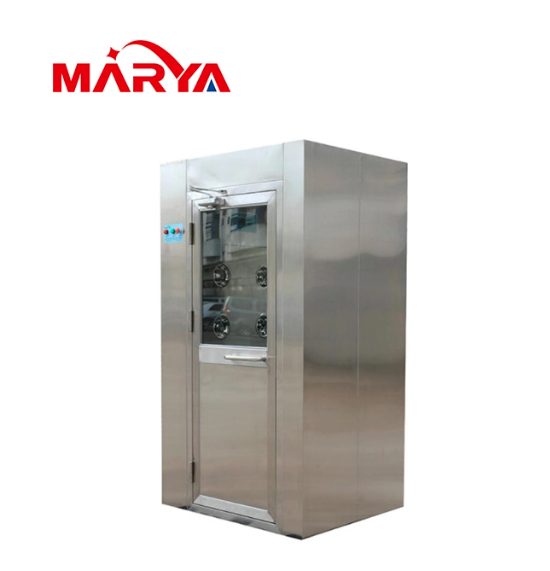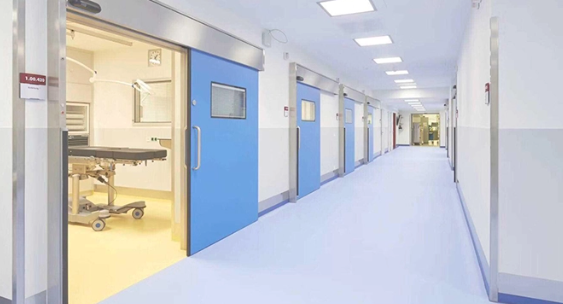Views: 0 Author: Site Editor Publish Time: 2025-08-12 Origin: Site






A cleanroom system is a controlled environment designed to minimize contamination and maintain specific levels of cleanliness. These systems are crucial in various industries, including pharmaceuticals, biotechnology, electronics, and food processing, where contamination can significantly impact product quality and safety. This comprehensive guide will cover the essential aspects of cleanroom systems, from their basic components to their applications and the standards they must meet.
A cleanroom system is an enclosed space where the concentration of airborne particles is controlled to specified limits. The primary purpose of a cleanroom is to provide a contamination-free environment for sensitive processes and operations. Key components of a cleanroom system include:
Cleanroom Materials: Walls, floors, and ceilings made from contamination-resistant materials.
Equipment: Air filtration systems, HVAC systems, and monitoring equipment.
Furniture: Specialized furniture designed to minimize particle generation.
HVAC and Filtration: Systems designed to maintain air quality and circulation.
Cleanroom systems control contamination through a combination of airflow management, filtration, and strict protocols for personnel and materials entering the cleanroom.
Cleanroom systems can be categorized into modular and traditional built-in designs. They are classified based on cleanliness standards such as ISO classes and FED-STD-209E. Different industries require different levels of cleanliness, leading to specialized cleanroom systems tailored to specific needs.
| Type | Description |
|---|---|
| Modular Cleanrooms | Prefabricated units that can be quickly assembled and disassembled. |
| Traditional Cleanrooms | Built-in systems that are permanently installed and customized for specific facilities. |
| ISO Classes | Cleanroom classifications based on the number of particles per cubic meter. |

The materials used in cleanroom construction are critical for maintaining cleanliness. Walls, floors, and ceilings must be made from materials that resist contamination and are easy to clean. Common materials include stainless steel, epoxy-coated surfaces, and high-density plastics.
Cleanroom equipment is designed to maintain and monitor the environment. Key components include:
Air Filtration Systems: HEPA and ULPA filters remove airborne particles.
HVAC Systems: Designed to maintain temperature, humidity, and air pressure.
Monitoring Equipment: Sensors for pressure, temperature, and humidity ensure environmental stability.
Furniture in a cleanroom must be designed to minimize particle generation. Ergonomic and easy-to-clean designs are essential. Materials such as stainless steel and high-density plastics are commonly used.
Cleanroom systems play a pivotal role in the pharmaceutical industry, particularly in the manufacturing of sterile drugs and biotechnology applications. These controlled environments are designed to meet stringent regulatory standards, ensuring that pharmaceutical products are free from contamination. The use of cleanrooms is critical in processes such as the production of injectables, vaccines, and other sterile medications. By maintaining a contamination-free environment, cleanroom systems help prevent microbial and particulate contamination, which can compromise the efficacy and safety of pharmaceutical products.
The electronics industry relies heavily on cleanroom systems for the manufacturing of microchips and electronic components. These environments require extremely low levels of contamination to ensure the high precision and reliability of electronic products. Cleanrooms in the electronics industry are designed to control not only particulate contamination but also electrostatic discharge (ESD), which can damage sensitive components. The use of HEPA and ULPA filters, along with advanced HVAC systems, ensures that the air in cleanrooms is free from dust, airborne microbes, and other contaminants.
In the food and beverage industry, cleanroom systems are essential for preventing contamination during food processing, ensuring that products are safe for consumption. These systems are particularly important in areas where hygiene is critical, such as packaging and processing lines. Cleanrooms help maintain the quality and safety of food products by controlling airborne contaminants, temperature, and humidity. They are used in the production of perishable items, ready-to-eat meals, and products that require aseptic processing.
Laboratories and hospitals require cleanroom systems to maintain sterile environments for research and patient care. These systems protect sensitive experiments from contamination and ensure the safety of patients undergoing treatment. Cleanrooms in research facilities are used for a variety of applications, including cell culture, genetic research, and the development of new pharmaceuticals. In healthcare settings, cleanrooms are essential for procedures such as bone marrow transplants, burn treatment, and the preparation of intravenous medications.
Designing a cleanroom system involves assessing cleanliness requirements, choosing appropriate materials and equipment, and considering budget constraints. Key steps include:
Assessing Requirements: Determining the level of cleanliness needed.
Material Selection: Choosing materials that resist contamination.
Budget Considerations: Balancing cost with performance requirements.
Installing a cleanroom system involves several key steps, from initial setup to final validation. Testing and validation procedures ensure that the system meets required standards.
Regular maintenance is essential for maintaining cleanroom performance. Key activities include:
Routine Cleaning: Following established protocols to keep the cleanroom free from contamination.
Equipment Servicing: Regular maintenance of HVAC and filtration systems.
Ongoing Monitoring: Continuous monitoring of environmental parameters.

One of the primary benefits of using a cleanroom system is the significant enhancement in product quality and safety. By maintaining an environment free from airborne particles, microorganisms, and other contaminants, cleanroom systems ensure that products meet the highest standards of purity and reliability. This is particularly crucial in industries such as pharmaceuticals, where even minute levels of contamination can compromise the efficacy and safety of medications. Similarly, in the electronics industry, cleanrooms prevent defects in microchips and other sensitive components, ensuring that products function correctly and consistently.
Cleanroom systems are essential for achieving and maintaining compliance with stringent industry regulations. In the pharmaceutical sector, companies must adhere to guidelines set by the FDA, EMA, and other regulatory bodies to ensure the safety and efficacy of their products. Cleanrooms provide the controlled environment necessary to meet these standards, helping companies avoid costly fines and potential shutdowns.
Cleanroom systems contribute to enhanced operational efficiency by reducing downtime and improving productivity. A well-maintained cleanroom minimizes the risk of contamination-related issues that can lead to production delays and costly rework. By maintaining consistent environmental conditions, cleanrooms ensure that manufacturing processes run smoothly and efficiently. This is particularly important in industries such as semiconductor manufacturing, where even minor disruptions can have significant financial implications. Additionally, cleanrooms can streamline workflow by providing a dedicated space for sensitive operations, reducing the need for extensive cleaning and decontamination procedures.
Cleanroom systems provide a safe working environment for personnel and protect sensitive products from contamination. In industries such as healthcare and pharmaceuticals, cleanrooms are essential for preventing the spread of infectious agents and ensuring the safety of both patients and workers. By controlling airborne contaminants and maintaining a sterile environment, cleanrooms reduce the risk of occupational exposure to hazardous substances. This not only protects the health and well-being of personnel but also minimizes the risk of product contamination, which can have severe consequences for patient safety.
Advances in cleanroom technology are driving improvements in materials, modular designs, and smart monitoring systems. Future trends include:
Advances in Materials: New materials that offer better resistance to contamination.
Modular Designs: Prefabricated cleanrooms that can be quickly assembled and customized.
Automation and Smart Monitoring: Systems that provide real-time monitoring and control of environmental parameters.
Sustainability and Energy Efficiency: Cleanroom systems that reduce energy consumption and environmental impact.
A cleanroom system is a controlled environment designed to minimize contamination. It is crucial for industries where contamination can impact product quality and safety.
Cleanroom systems use a combination of airflow management, filtration, and pressurization to maintain a contamination-free environment.
Key components include cleanroom materials, air filtration systems, HVAC systems, monitoring equipment, and specialized furniture.
Regular maintenance is essential for maintaining performance. This includes routine cleaning, equipment servicing, and ongoing monitoring.
Understanding the essential components and functions of a cleanroom system is crucial for maintaining a contamination-free environment. By staying informed about the latest trends and technologies, you can ensure that your cleanroom system meets the highest standards of cleanliness and safety. Whether you are in the pharmaceutical, electronics, or food industry, a well-designed and maintained cleanroom system is essential for product quality and compliance. For tailored cleanroom solutions, consult experts who can provide comprehensive support from planning to implementation.
